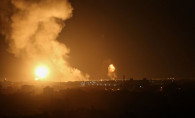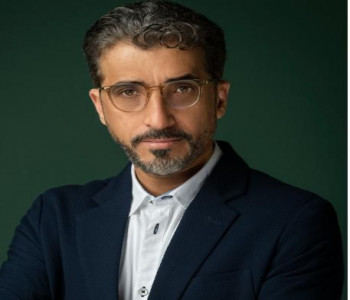UNESCO rediscovers the spirit of Iraq’s Mosul
UNESCO rediscovers the spirit of Iraq’s Mosul
Within its framework to preserve history and culture, UNESCO has decided to recover one of Iraq's iconic cities, Mosul, and its historic sites, including the Al-Hadba minaret. In February 2018, UNESCO Director-General Audrey Azoulay launched the initiative “Revive the Spirit of Mosul” to rebuild the city through three main axes: heritage, culture, and education, according to UNESCO.
History
The city of Mosul, which means "the linking point" in Arabic, is one of the oldest cities in the world. Acting as a bridge between north and south, east and west due to its strategic location, the 2,500-year-old city was home to a large number of people with different origins and religious beliefs. The Al-Hadba minaret, the leaning minaret adjacent to Al-Nouri Mosque in Mosul, was, before its destruction, 45m tall and decorated with ornamental brickwork, according to UNESCO.
Representing 800 years of history, Al-Hadba minaret, which means “hunchback”, is a symbol of Mosul and Iraq, and it was featured on Iraqi 10,000-dinar banknotes before its destruction in 2017.
In July 2014, late ISIS leader Abu Bakr al-Baghdadi declared the establishment of his “caliphate” from Al-Nouri Mosque. Three years later, Iraq's army and the US-led international coalition forced the jihadists out of Iraq's second largest city. Al-Nouri Mosque and the Al-Hadba minaret were destroyed in June 2017 during the battle to take back the city. Mosul was devastated, and the city and its heritage sites were left in ruins, leaving thousands of its inhabitants displaced, according to France24.
“Revive the Spirit of Mosul” initiative
The United Arab Emirates, in cooperation with UNESCO, invested $50.4 million for the revival of the historic landmarks of Mosul, including Al-Nouri Mosque and its famous leaning minaret, and the Al-Tahera and Al-Saa'a churches. The initiative created over 1,000 jobs, recovered 7,218 fragments, removed 9,940 tons of rubble, extracted an explosive device and completely stabilized the sites, UNESCO reported last March, adding that the preparation phase has ended and the reconstruction phase has started.
Supported by the European Union, UNESCO has another major heritage venture: “Reviving Mosul and Basra Old Cities”. It aims to reconstruct and restore 122 heritage houses in Mosul, 75 of which saw construction works started in 2020 and are planned to be handed to their owners, according to UNESCO.
As for Al-Hadba, only its base remains standing, and its reconstruction began in mid-March, while work on the mosque is set to begin in the summer. By the end of 2023, the site should be ready, according to France24.
Unexpected discoveries
In February 2022, a team of 40 workers and archaeologists who worked on the Al-Nouri Mosque compound made an unprecedented discovery underneath its prayer hall, according to the UNESCO.
UNESCO reported some gaps were found during the excavation works that led to four rooms that had been used for ablution. These rooms, which back to the 12th century Atabeg era, were completely buried and were not mentioned in the historical sources and books.
Some other artifacts were also discovered during the excavation, including jars, pottery pieces, pieces of carved stone, and coins dating back to different periods. This discovery is important for the archeological community in Iraq and highlights a new perspective of the history of the mosque. The National Commission for Heritage and Antiquities is working with UNESCO to protect these parts and ensure its preservation as a museum for visitors to learn about the different phases that the mosque witnessed in its construction and its eight-century history, according to the UNESCO.







